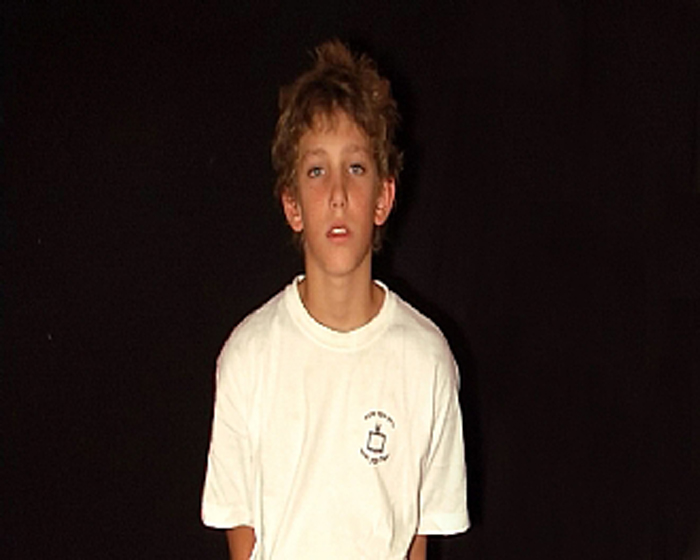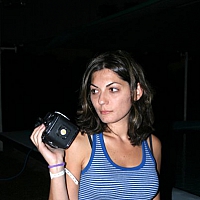
LeaGolda Holterman Born in Haifa, Israel, 1976; lives and works in Tel Aviv Sacrifice, Video, 4:30min 2008 Lea Golda Holterman's video work features a young boy who presents himself as Shai Engel, age 12, from Tel Adashim in the Jezreel Valley, Israel. With his light blue eyes and serious gaze directed at the camera, the boy describes his deep commitment to the land of Israel, his longing to serve in a combat unit in the Israeli army and the understanding that he may pay for his decision with his life. Despite the determined manner in which he attempts to explain his position, it is difficult to identify enthusiasm or excitement in his voice or words. Fear, sluggishness, even an unexpected fatigue seem to envelop his figure, undermining the ability to interpret his statements as an expression of an ideological vision or desire. The powerful effect of this work is based on the extreme manner in which innocence mingles with maturity and purity clashes with processes of social construction. The work raises extremely difficult moral questions related to politics, education and art making on the political, educational and artistic levels. It points to the complexity of local existence, marks the hidden manner in which national and cultural identity are constructed, and attests to the destructive influence of the violent atmosphere in which we live both on the ability to form a personal identity and on the possibility of constructing an emotional experience. It is commonly argued that those who return from war are re-assimilated into civilian society, while living in it like ghosts; invisible, unknown and surrounded by an abyss of silence, emptiness and purposelessness; trapped in the dichotomy of being a hero or a criminal, between sanctification and repression. Yet beyond the dimension of personal experience, it turns out that just as in cases of post-trauma, war is never simply reduced to being a bad memory; rather, it induces change in the structure and manner of thinking characteristic of society as a whole. Accordingly, Holterman's work points to a double kind of violence: the external, social violence that has led the boy to form his beliefs, and the violence that has been internalized and assimilated to the point of being perceived as heroic, romantic, aesthetic and necessary. The work's title, Sacrifice, underscores and enhances this dual complexity and sheds light on the boy's supposedly free choice, as he attests to his seemingly self-induced willingness to sacrifice his life. Moreover, the affinity with the biblical story of the sacrifice of Isaac requires an examination not only of the boy's status, but also of the figures of the father and the angel – raising the question of who undertakes to perform the sacrifice and who intervenes to impede it; at the same time, it raises the possibility that this is a sacrifice without an angel.

